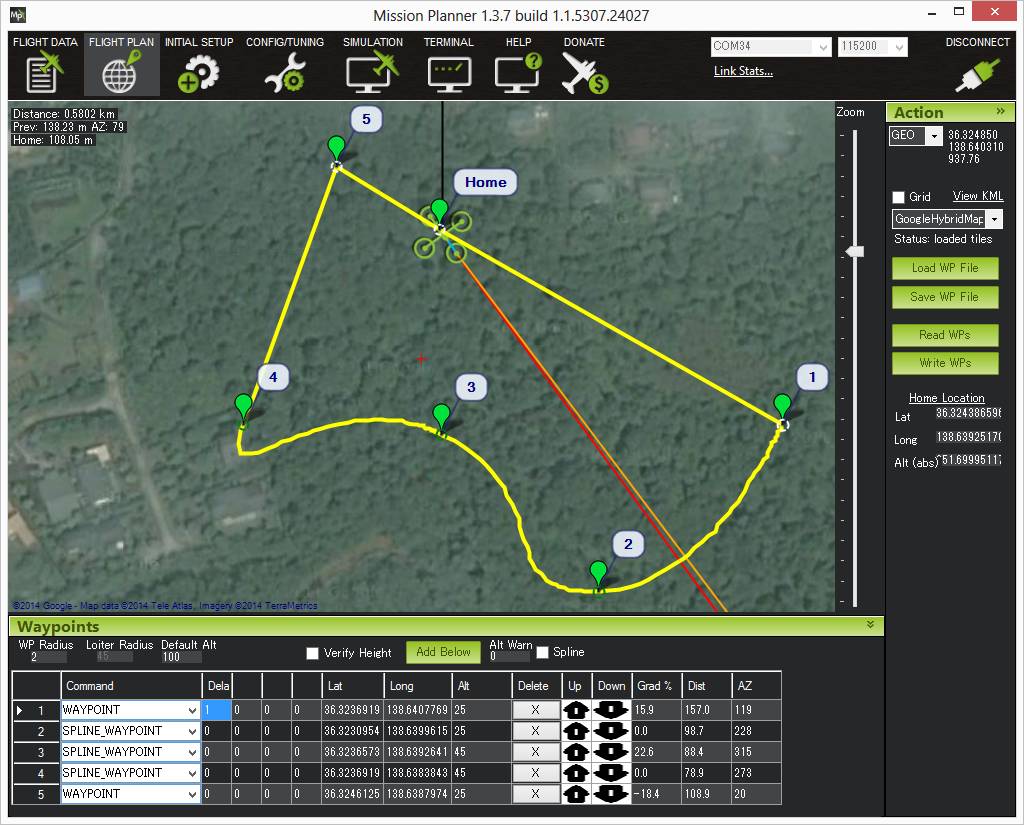Set up a Cable Cam down the center of a descending road and my Solo promptly ran into a tree branch 5' from the set point. (Propeller guards were ineffective against the branches.) Are there ways to increase the accuracy?
Would the mRo GPS u-Blox Neo-M8N/ 3DR SOLO Upgrade (mRo GPS u-Blox Neo-M8N / 3DR SOLO Upgrade) increase the accuracy of the set points?
How about the 3DR Pixhawk 2.0 Cube (SOLO Replacement) (3DR Pixhawk 2.0 Cube (SOLO Replacement) What I find perplexing after reviewing 3drpilots.com as well as the Pixhawk 2 Facebook pages for a couple of nights now is whether this Pixhawk cube is an alternative that actually fits inside the off-the-shelf 3DR Solo. If so, where does it go? On the bottom of the largest board in the Solo below the battery compartment? Or is this cube for other custom products made from 3DR components? This cube appears to be too voluminous to fit in the space where the GPS board is located. Is this cube plug and play as the mRo GPS u-Blox Neo-M8N/ 3DR SOLO Upgrade appear to be? Is the GPS board redundant of the Pixhawk 2.0 Cube?
What's so off-putting is mRobotics.io comment on their 3DR Pixhawk 2.0 Cube page, "There is not much documentation/information available, so you are on your own."
Thank goodness for the 3DR Pilot community so we're not alone.
If such a Pixhawk cube can fit within the 3DR Solo, is it worth the 73% premium price to wait for the Pixhawk 2.1 "green" cube? (Green Cube for Solo (Late April Batch) - Pixhawk2). I don't intend to fly this in the cold, and I'm not going to disassemble it, so I don't see the benefit of the heater and the absence of glue. Are the sensors so superior that I won't run into that tree?
My Solo flew higher and further than the set point created just minutes before. I understand that the barometer senses the vertical position of the set points. Would either of these cubes (assuming they would fit in one of my off-the-shelf 3DR Solos) with their redundant barometers be more likely to return to the same set point?
Thanks again for clarifying something that must be terribly obvious to most of you who build your own drones from scratch.
Chris P.
Would the mRo GPS u-Blox Neo-M8N/ 3DR SOLO Upgrade (mRo GPS u-Blox Neo-M8N / 3DR SOLO Upgrade) increase the accuracy of the set points?
How about the 3DR Pixhawk 2.0 Cube (SOLO Replacement) (3DR Pixhawk 2.0 Cube (SOLO Replacement) What I find perplexing after reviewing 3drpilots.com as well as the Pixhawk 2 Facebook pages for a couple of nights now is whether this Pixhawk cube is an alternative that actually fits inside the off-the-shelf 3DR Solo. If so, where does it go? On the bottom of the largest board in the Solo below the battery compartment? Or is this cube for other custom products made from 3DR components? This cube appears to be too voluminous to fit in the space where the GPS board is located. Is this cube plug and play as the mRo GPS u-Blox Neo-M8N/ 3DR SOLO Upgrade appear to be? Is the GPS board redundant of the Pixhawk 2.0 Cube?
What's so off-putting is mRobotics.io comment on their 3DR Pixhawk 2.0 Cube page, "There is not much documentation/information available, so you are on your own."
Thank goodness for the 3DR Pilot community so we're not alone.
If such a Pixhawk cube can fit within the 3DR Solo, is it worth the 73% premium price to wait for the Pixhawk 2.1 "green" cube? (Green Cube for Solo (Late April Batch) - Pixhawk2). I don't intend to fly this in the cold, and I'm not going to disassemble it, so I don't see the benefit of the heater and the absence of glue. Are the sensors so superior that I won't run into that tree?
My Solo flew higher and further than the set point created just minutes before. I understand that the barometer senses the vertical position of the set points. Would either of these cubes (assuming they would fit in one of my off-the-shelf 3DR Solos) with their redundant barometers be more likely to return to the same set point?
Thanks again for clarifying something that must be terribly obvious to most of you who build your own drones from scratch.
Chris P.


